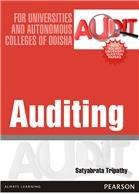4. Key employment indicators from the household survey The Bureau of Labor Statistics (BLS) adjusts the numbers from the household survey to estimate the employment picture for the entire population. Once the adjustment is made, the BLS uses the figures to generate key employment indicators. The following table presents information from the household surveys conducted for November 2017 and, for purposes of comparison, November 2016. The numbers in the table are listed in thousands. For example, the number of unemployed in the table for November 2017 indicates that about 6.6 million people were unemployed at that time. Use the information lists that follow the table to help you fill in the missing values in the table. - The participation rate is the percentage of the working-age population in the labor force-elther employed or searching for employment. In November 2016 , the participation rate was 25,540159,457100=62.6%. - The employment-population ratio is the percentage of the working-age population that is employed. In November 2016 , the employment-population ratio was 254,540152,043100=59.7%. - The official unemployment rate is the percentage of the labor force that does not have a job but is actively searching for employment. In November 2016 , the official unemployment rate was 159,4577,409100=4,6%. To get a more accurate picture of underemployment in the economy, the BLS calculates several alternative measures of labor underutilization: - The U-1 measure of labor underutilization measures the percentage of the labor forct nas been unemployed for 15 weeks or more at the time of the household survey, In November 2016,U1 was 159,492,929100=1 - Another measure, the U-4 measure of labor underutilization, treats discouraged work though they were unemployed and part of the labor force. To calculate U-4, the BLS divides the sum of unemployed and discou jod workers by the sum of the labor force and discouraged workers. In November 2018U4 was 159757+5,8377,400+5,837100=8.0%. Based on the numbers in the previous table, indicate whether each of the following statements accurately describes the differences in the employment situation between November 2016 and November 2017. The official unemployment rate and the U-4 measure of labor underutization are two different measures of joblessness in the economy. Excluding discouraged workers from the official unemployment rate may cause the officat rate to underemployment. the true extent of








